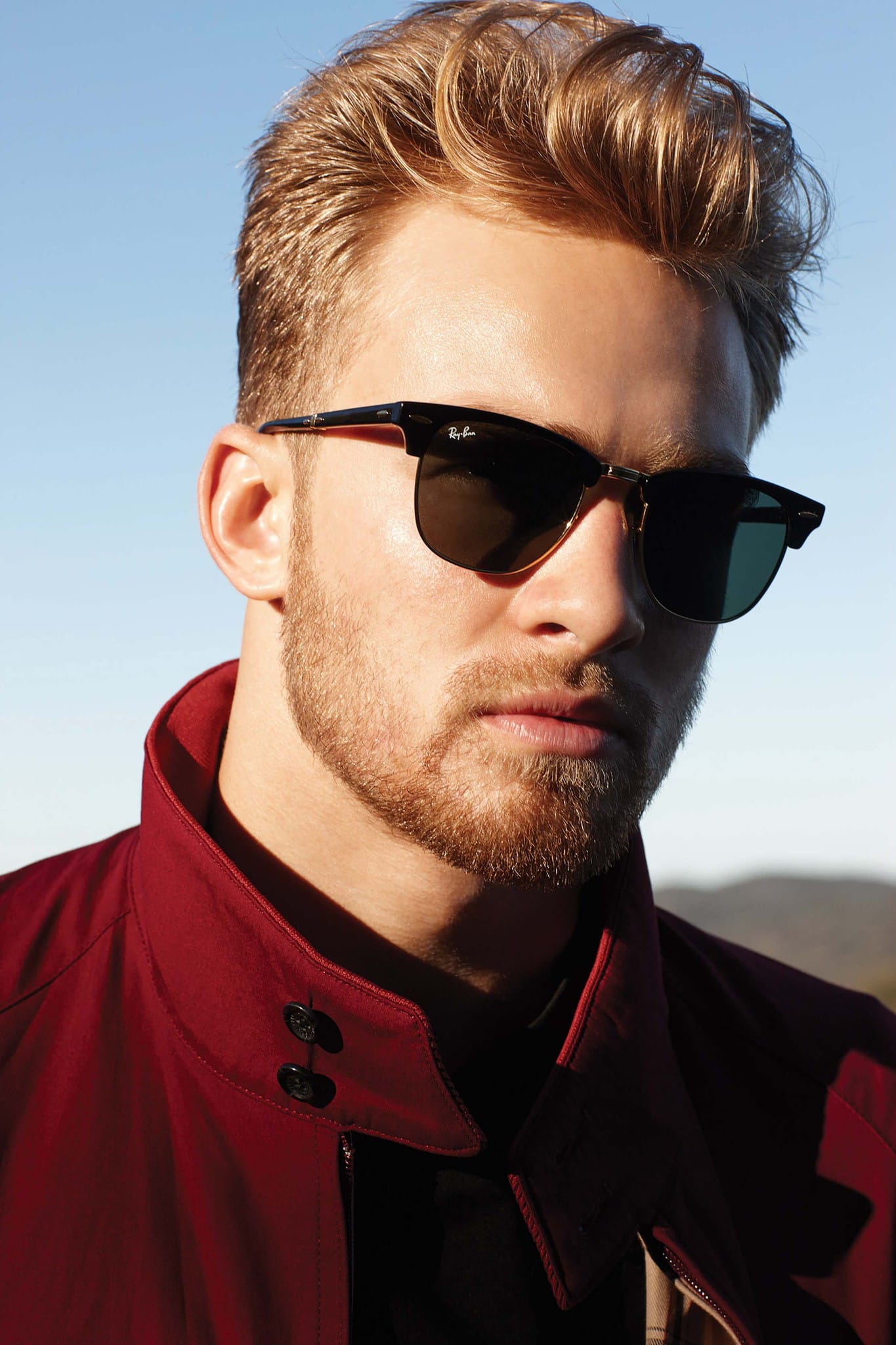the harrington
A SIMPLE JACKET OF COMPLICATED PROPORTIONS
Written by David Bedwell
Photography by Erik Rasmussen

Jacket GRENFELL Sunglasses RAY-BAN Styled by DAVID BEDWELL
I am a vintage shopper, always have been. It is rare that I’d walk by a vintage clothing store and not go in. Thirty years ago I bought a plain windbreaker from a vintage store in Memphis, Tennessee. I don’t remember why I was even there, probably one of my pilgrimages to Graceland, I suppose. Whatever the reason, I spent my last twenty dollars on a very simple tan jacket: a Baracuta G9. I still have it today.
You know the jacket. You’ve seen it, even when you don’t know you have. Walk a crowded street and you pass it. Rummage through your dad’s closet or a vintage clothing store and you touch it. It may not be a fashion standout, but it’s been worn by some of the most visible men in history. James Dean wore it in Rebel Without a Cause, and it was a go-to for Steve McQueen and Paul Newman. John F. Kennedy, Muhammad Ali, and Gregory Peck all zipped it up. Sid Vicious and Pete Doherty repeatedly compromised themselves in it. The Harrington: many companies have claimed it, but only two are at the heart of this simple jacket’s complicated origins.
The nickname “Harrington” oddly comes from the 1960s soap opera Peyton Place. John Simons, owner of The Ivy Shop, coined it after a style of jacket the character Rodney Harrington, played by Ryan O’Neal, wore on the show. The jacket was manufactured most notably at the time by Baracuta of Manchester; timing had a part in putting that company—and its now iconic G9 jacket—at the heart of the Harrington creation story, along with an assist from Elvis, who wore it in the 1958 film King Creole and launched it into fashion popularity. But the style of jacket that has become known as the Harrington has its provenance in earlier decades, and its ancestry in the very cloth it’s cut from.
T. Haythornthwaite & Sons Ltd., a British fabric mill in Burnley, had been making coats and jackets since 1918, commissioned by the likes of Burberry and Aquascutum as a private-label manufacturing service. The origins of the Harrington arose out of a chance meeting between the mill owner’s son, Walter Haythornthwaite, and the avid outdoorsman and doctor Sir Wilfred Grenfell in 1922. Haythornthwaite was inspired by something Grenfell said about clothing during a conference: “You could not keep a statue warm by putting a fur coat on it; clothing must be windproof but must breathe.” While doing humanitarian work in Newfoundland, Grenfell had struggled to find lightweight clothing that could withstand the elements of inclement weather while maintaining functionality. In 1923, after a year of development, Haythornthwaite presented a woven gabardine of 600-thread-count Egyptian cotton to the good doctor. Made from this cloth, the new jacket kept out the rain and let out the sweat. Grenfell’s Harrington was originally called the Golfer, and through the fifties was popularized by the likes of Arnold Palmer and Henry Cotton.
Meanwhile, brothers John and Isaac Miller, who’d also been making private-label outerwear for Burberry and Aquascutum from their Baracuta coat factory in Manchester, began, at the same time as Haythornthwaite, developing their own version of a lighter, more versatile rain jacket. Viewed as an alternative to the common mackintosh-style coats available at the time, the brothers’ jacket incorporated a ribbed collar and cuff on a shorter length coat with a two-button collar closure used to shield the body from the storied wet British weather. Commissioning the use of the famous red tartan from the House of Fraser as the lining, what became known as the G9 was born. The history is common knowledge, but what’s not as widely known is a tale that the name G9 was derived from the ninth design iteration of another British clothing manufacturer’s jacket, that of Grenfell. Until then, it was simply called a Baracuta rain jacket.
Over the years, many companies have made their own version of the Har- rington—notably Yves Saint Laurent, Brooks Brothers, Lambretta Clothing, and Lacoste—and variations are still in production. J.Crew and Baracuta recently collaborated on a G9, and Ralph Lauren’s best-selling windbreaker for over twenty years is based on the common, classic Harrington design.
When eight-time record holder Donald Campbell broke the land-speed record in 1964, the challenge of velocity was answered with ingenuity. Every design element of his car, the Bluebird-Proteus CN7, had a purpose, and the end result was itself a legend. Style, in Campbell’s case, was a necessary condition. It’s no surprise that while driving 440 mph at Lake Eyre, Australia, he wore a Harrington.
So next time you’re fumbling through that closet or digging through vintage store racks, take a minute, do a double take; you might be looking at a piece of history, or at least at a jacket that will stand the test of time.